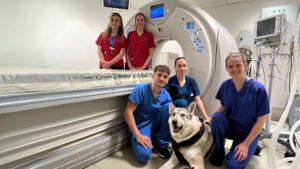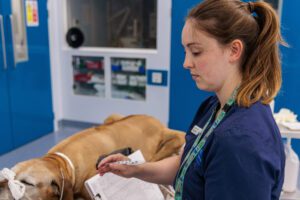Abstract
Objective
To report the use of an ancillary plate spanning from the calcaneus to the common calcaneal tendon to stabilize a comminuted fracture in a dog.
Study design
Case report
Animals
Two-year-old male neutered mix-breed dog.
Methods
The dog presented for a grade IIIa open highly comminuted fracture of the shaft and tuber of the left calcaneus from a suspected gunshot wound. Plantar and lateral locking plates were applied to the calcaneus, with the lateral plate extending proximally and sutured directly to the common calcaneal tendon. Autogenous cancellous and allogenic corticocancellous bone grafts were placed into the fracture site, and a human placental matrix was injected after closure. A lateral tarsal splint was applied for 17 weeks postoperatively. The lateral bone-to-tendon plate was replaced with a smaller lateral plate spanning only the calcaneus 9 weeks after the initial surgery.
Results
Radiographic union was documented at 17 weeks. At 25 weeks, both plates were removed due to suspected implant-associated infection. At the final follow-up assessment, 36 weeks after initial surgery, the dog had returned to normal function with no observable lameness.
Conclusion
Incorporation of the common calcaneal tendon as a proximal segment for plate fixation led to successful union of a highly comminuted calcaneal fracture.
1 minute read
In this paper











